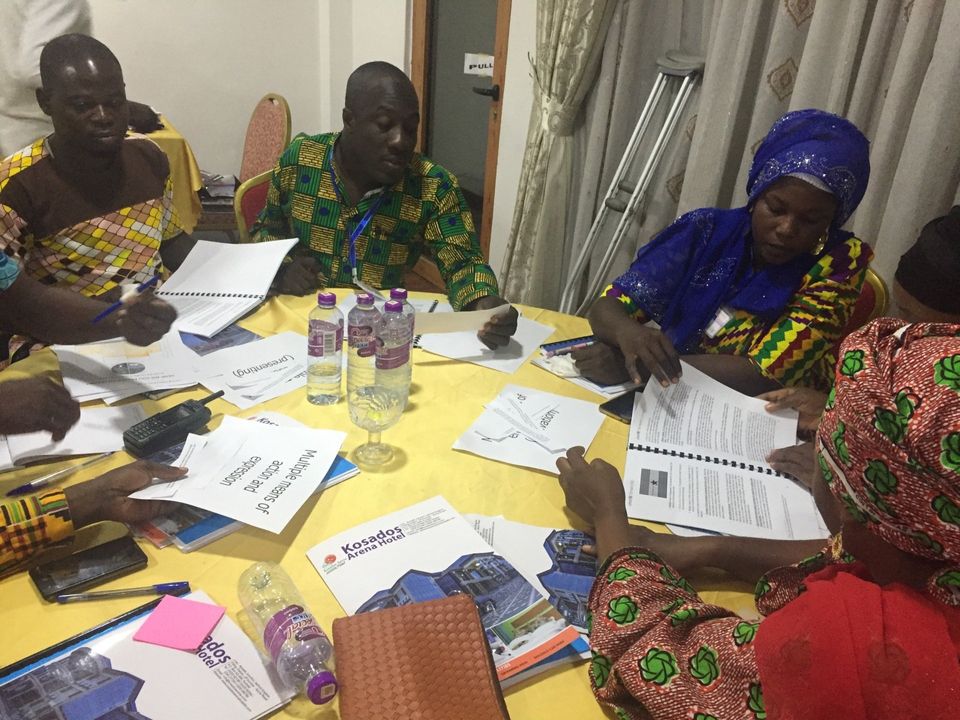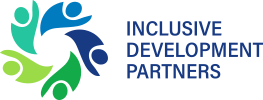Ghana’s Readiness for Inclusive Education

Hayley Niad
Education cannot wait. Inclusion for children with disabilities cannot wait. It cannot wait for systems to be perfect, for schools to be well-resourced, for specialist support staff to be available to each child. Fortunately, the 40 educators I worked with this September in Ghana feel exactly the same way. Over the course of a week-long workshop with them discussing Universal Design for Learning (UDL) and Response to Intervention (RTI) strategies to introduce in first grade classes, they made it very clear that this is an issue they are motivated and prepared to take on in their own communities. Going into this work, I recalled some popular international rhetoric that already overburdened teachers are not ready to take on more work for inclusion, that this is an issue which needs to wait until teachers are more prepared and supported. I knew coming in that large class sizes, limited resources, and attitudinal beliefs about disability pose challenges for the inclusion of all children in their education. Indeed, during the workshop, participants were quick to mention the neglect and abuse of children with disabilities, beliefs about disability being a curse, and even known cases of infanticide of children with disabilities in their communities. Yet in the span of only a few hours, after explaining the definition of inclusion and its advantages for all students, it became evident that teachers were eager to support the inclusion and acceptance of such children in their own classrooms, and what they wanted most was to know how to do this. This sweeping agreement on the importance of inclusion should not have caught me by surprise, but it did. In fact, it challenged me to check my assumptions in a very meaningful way.
This may very well be the first time UDL and RTI have been taught to a single group of educators in Ghana, and participants seemed excited to become leaders of change in this field. One of the most exciting aspects of the training was witnessing the creative strategies educators considered for how to apply these principles practically in their communities. For example, in discussing school changes to improve UDL, one school mentioned they would engage their local parent organization to replace classroom windows for new wooden ones that permit better lighting. When speaking about the importance of recognizing difficulty learning at an early age, one head teacher decided to reassign his own job from a teacher of Grade 4 to a teacher of Grade 2. Or, when speaking about community sensitization for inclusion, participants made mention of involving parent organizations, community councils, and even religious communities. To provide classroom support for small group instruction, one realistic solution appeared to be the use of national service personnel in local communities, who are post-tertiary graduates required to serve their country for one year. Not a single one of these solutions was “taught” to participants by facilitators, but rather generated by participants independently.
Educators went above and beyond in their openness to both personal reflection and future change. A number of people spoke aloud to say they previously used to shout at, punish, or exclude children with disabilities in their teaching. One participant thoughtfully reflected on his past behavior, adding “now I realize I was wicked.” After being taught the concept of person-first language, participants quickly began correcting each other as they slipped up with terms like “blind student” to correct for “student who is blind.” Perhaps most exciting of all was the new intention of many participants to welcome children with disabilities who are currently out of school, a proposal that was never mentioned in facilitators’ instruction on classroom inclusion. The path that lies ahead for these participants in applying what they learned to their real world classroom situations is tremendously challenging. One teacher spoke of having only a single mathematics textbook for a class of 48 students, asking how she was supposed to provide inclusive instruction when children couldn’t even see the books. These are the types of problems that will not be resolved today or tomorrow, yet these teachers understand the ethos that inclusion cannot wait. Teachers in Ghana are eager to do what they can within the constraints they currently experience, and they should serve as an inspiration to the broader international community that assumptions about teacher preparedness for inclusion need to be re-examined. As the year progresses, I look forward to being continuously impressed with the successes that will unfold in these communities, as more and more children with disabilities are engaged as active participants in their own education.
